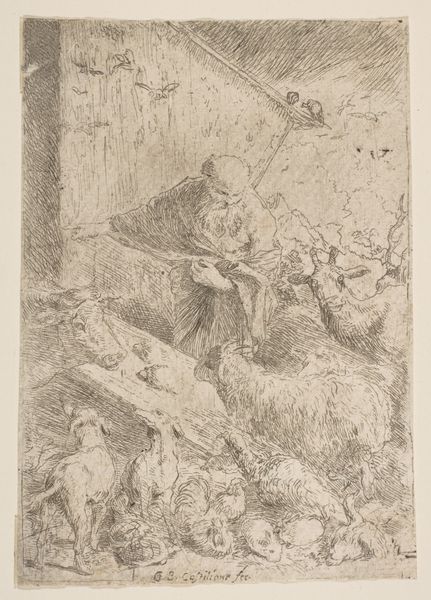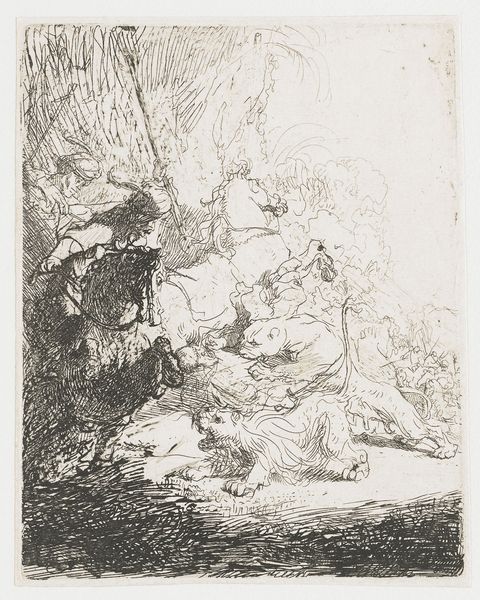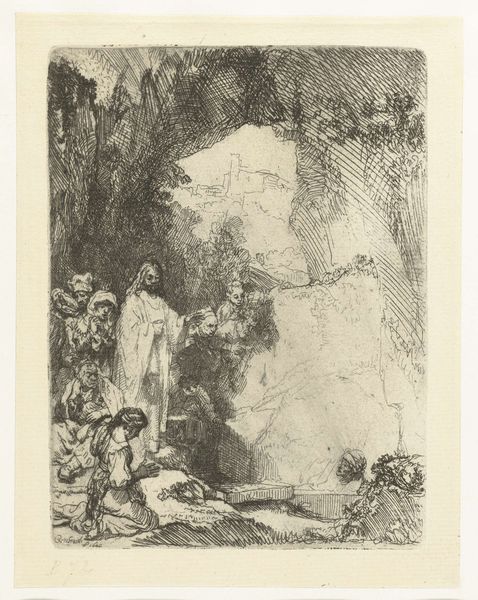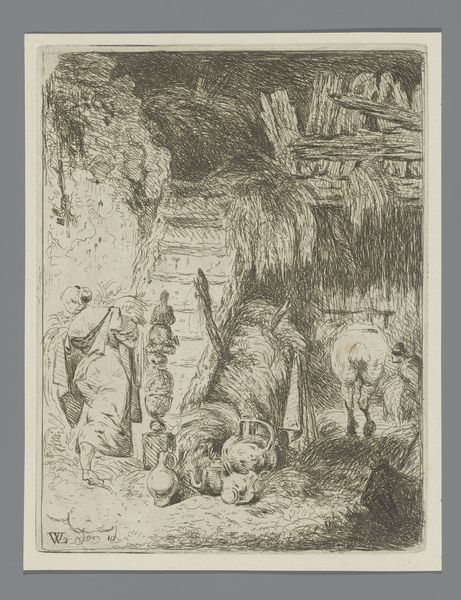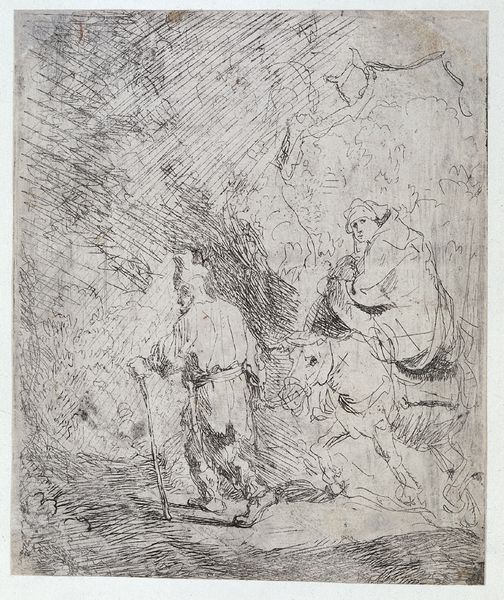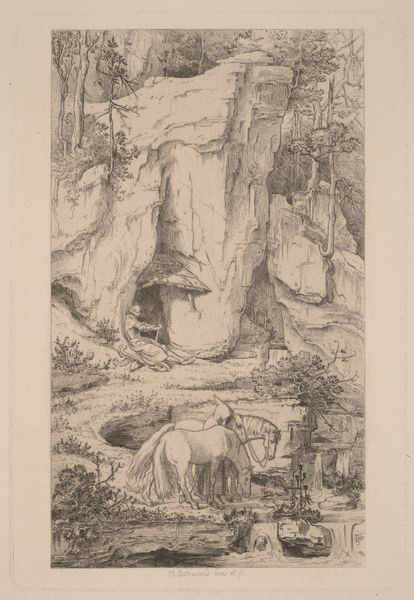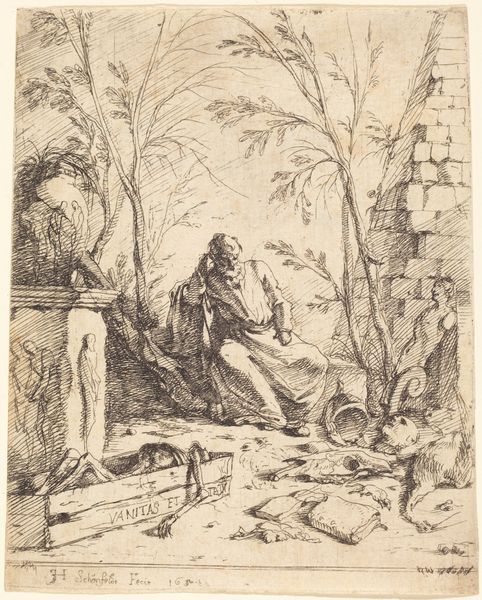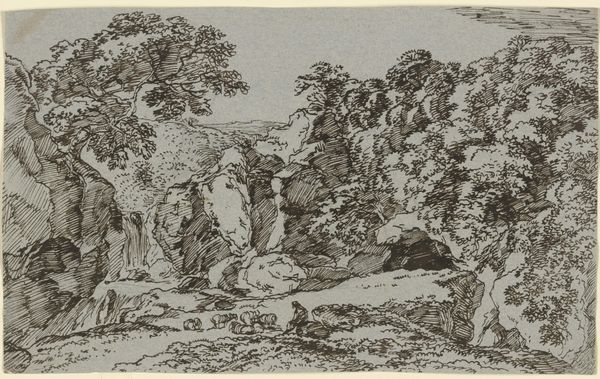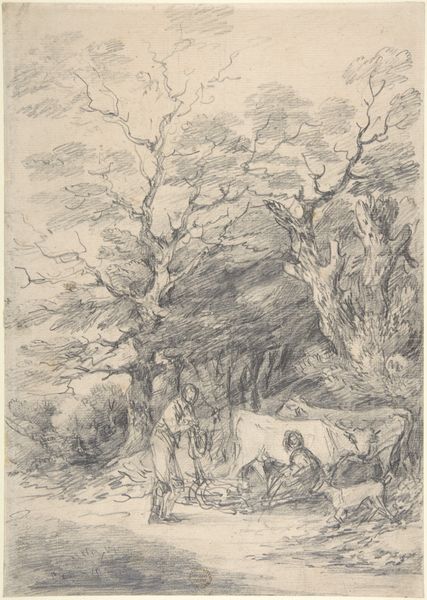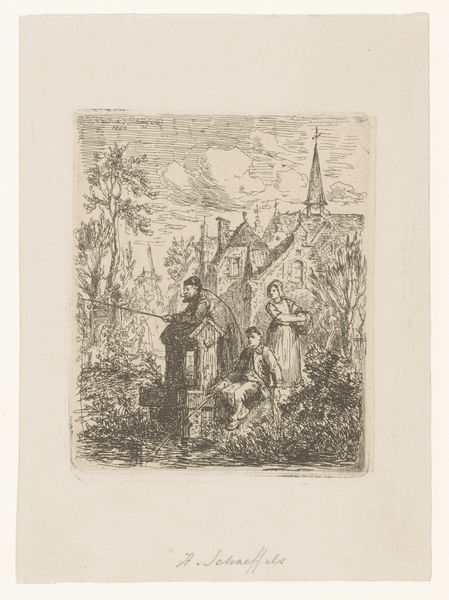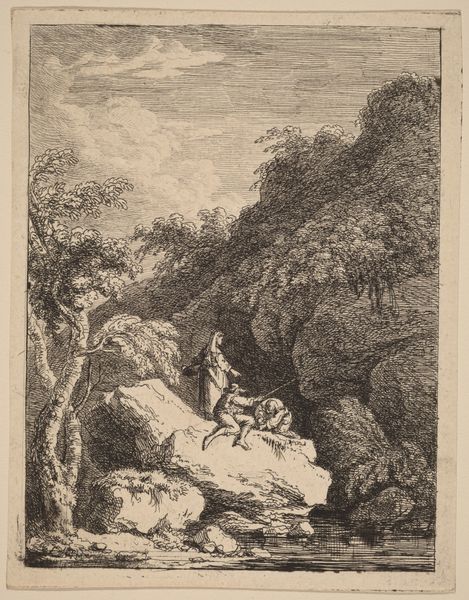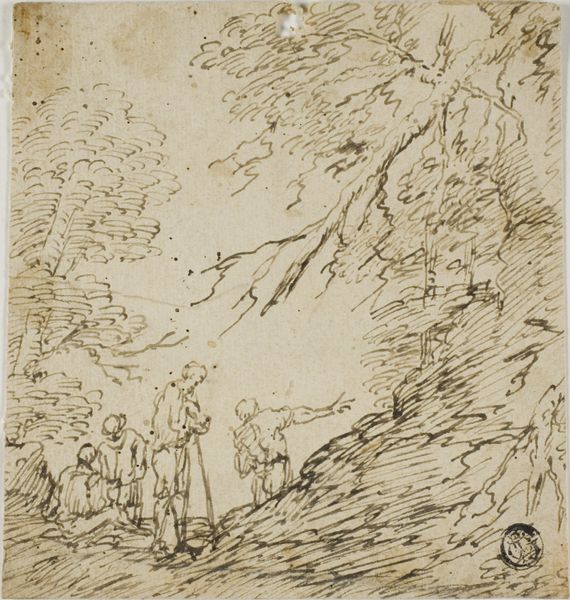
drawing, print, etching, intaglio
#
drawing
#
ink drawing
#
baroque
# print
#
etching
#
intaglio
#
history-painting
Dimensions: sheet: 6 x 4 1/2 in. (15.2 x 11.5 cm)
Copyright: Public Domain
Curator: Here we have Rembrandt van Rijn’s etching from 1642, "The Raising of Lazarus, small plate," currently residing at the Metropolitan Museum of Art. It’s an intaglio print, demonstrating remarkable detail for its size. What’s your initial impression? Editor: Wow, even at this scale, the drama leaps off the paper! It’s like a whispered scream caught in ink. All that frantic energy surrounding this… emptiness where Lazarus should be. Gives me chills. Curator: The printmaking process, particularly etching, allowed Rembrandt to achieve these incredible tonal variations and fine lines. Think of the layers of acid baths to create depth in the plate. Consider the economics too; printmaking made this religious scene more accessible to a broader audience than a painting would have. Editor: Absolutely! And it's amazing how he uses light and shadow, even with just ink. See how Lazarus almost seems to glow? Like he's emerging from a shadowy dream… or a nightmare. You know, I wonder if the ‘small plate’ designation also influenced the intensity – forcing everything closer together. Curator: It's a compelling thought. There is so much packed into a tight space. Note how Rembrandt guides our eye with contrasting values. The use of perspective in the print seems deliberate, highlighting Lazarus but also the architecture visible behind the tomb opening. What about this work grabs you in terms of storytelling, or narrative? Editor: Well, Lazarus isn't really ‘there’, is he? He's just… void. And everyone is so engrossed – their faces tight with anticipation or dread, or both. I guess it mirrors the mystery of death itself – that unsettling transition we can't quite grasp, except through belief, or… in Rembrandt’s case, art. There are so many of these onlookers, almost overwhelming Lazarus as soon as he is called back. I am uncertain whether he welcomes this salvation. Curator: Very interesting! The Baroque period loved these grand narratives, but here it's shrunk down, made more personal through print. Mass production bringing a grandiose biblical spectacle down to domestic, manageable scale. Editor: Makes you think, doesn’t it? How even the most dramatic miracles eventually become…pocket-sized commodities. Still powerful, though. I keep coming back to Lazarus there as not the center, but really more like the beginning, of something bigger and less controllable. Curator: I agree that that reading speaks to an awareness of the consumption and making of imagery itself during that period. Thanks for sharing your insights! Editor: Likewise! I always find new appreciation digging into these kinds of artistic legacies.
Comments
No comments
Be the first to comment and join the conversation on the ultimate creative platform.
